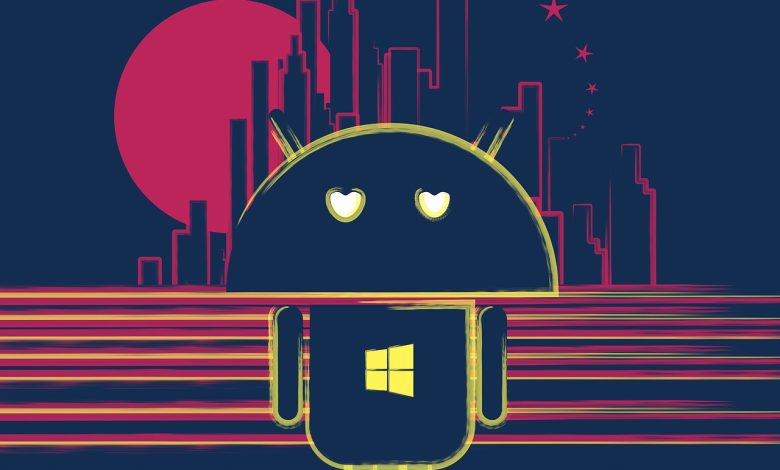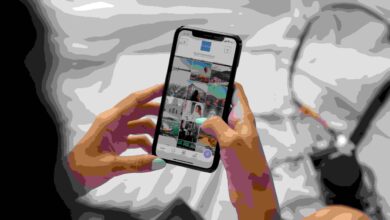How Retailers Are Using Mobile Apps To Improve Shopping Experience

Shopping experience can make or break a retail business.
This statement holds 100% true especially if such ventures have an online presence. Top B2C businesses around the world, like Amazon, Walmart, and Etsy use mobile apps to turn interactions into transactions. And clearly, they are killing it. That’s because they usually go extra miles to prioritize user experience of their target audience.
Here are 6 ways mCommerce mobile apps, like Amazon, are fully revamping the shopping experience for customers and ultimately winning the retail business game.
-
Best retail shopping apps are more user-centric and offer personalization.
Apps only become successful when they are built with a dedicated buyer persona in mind. All the app features, whether they are fully released or beta-testing, should provide a smooth user journey. All user-centric mobile apps have 3 things in common: they are cross-platform, allow personalization and have intuitive, minimal designs.
Cross-platform apps are available on multiple digital channels. With such apps, you can target Android, iOS and Desktop users – all with one app. A larger audience, in this case, ultimately means more sales.
To leverage the power of personalization and entertain 63% of smartphone users (Google Think), brand owners need apps that process the buying behavior of users and make future recommendations based on items available in the wishlist. Allow them hassle-free registration processes, multiple profiles, pin locations, preferred languages, push notifications and less ads.
Additionally, your app should have minimalistic designs that focus more on the products or else your shoppers can be distracted. Ask your app developers for a design which is visually appealing, yet guarantees user stickiness and spikes interest.
-
Mobile Apps designs reflect the overall brand identity.
For a retail venture’s online regime to unfold successfully, the in-app shopping experience should match the in-store feel with similar visual aesthetics. The app has to have same backgrounds, wallpapers, and sidebars. Most importantly, the user interface should stay same across different platforms if you already have a website and social media presence.
For example, if you have a clothing website with an orange and mustard logo, the same brand palette should establish the overall designing pillars for your Instagram handles, your Facebook page or group and your mobile application.
-
Retail mobile apps have 24*7 live chat support.
The live chat support option is the same as assigning a personal representative to a shopper as we have in physical stores. These representatives not only assist shoppers with their buying decisions, but also end up selling a product or more that the buyer had not initially planned to. In fact, this option is more profitable than the actual representative standing in a store for he or she would only be attending one customer at a time as opposed to an online chat where single support employee attends 3-5 customers simultaneously.
Considering the option does improve overall conversion rate, more apps now have a tab which connects an app user to a ‘human’ support person. Though, we have also seen apps with calling and Whatsapp extensions, we still suggest developers to add in-app chat feature so users stay in the app, still dedicated to their purchasing purpose.
-
Brands are focusing on building brand loyalty.
Retail businesses now aren’t only hiring a developer to build an ecommerce app for them. These businesses hire a top mobile app development company because they want to establish brand loyalty in different ways depending upon the nature of their products. Rewards, cashbacks, coupons, free vouchers, and discounts are all good ways to motivate your customers to shop again from you. While reward program can look like a cut on your profit, it is actually a marketing investment that can hook shoppers to your brand.
Now other than the discounts and free vouchers, companies have affiliate programs where they aim to turn shoppers into their brand ambassadors. At Tekrevol, we have designed apps rightly integrated with social media platforms. Your user gets a reward for each new member he or she invites, or gets a percentage of profit when their referral buys a product. It’s that simple for your users, and ultimately a marketing technique that makes your retail app a household name.
-
Shopping features are faster and offer more convenience.
Best mobile shopping apps are designed with a user journey in mind. Your user likes a product, picks it up or adds it into the cart, either window shops something else, goes to the billing counter and done. This should stay the same when they are inside a mobile app.
Take Amazon’s shopping app as an example.
- As a first-time user, the Amazon shopping app does not force you to sign up. Users can skip the signup or login option and proceed to browse products.
- The app allows you to voice search products using Alexa, or you can upload a photograph / scan a bar code to search faster.
- For a shopper with a specific product in mind, the sidebar lets you choose a department too.
- Shoppers get to choose from a list of different languages. The suggestions become more specific when the map extracts your actual location.
- On the product image, the user sees a rating, can choose to share the item on social media or add it to wish list. Below the image are the options to ‘Buy Now’ or ‘Add to Cart’. Again, these two options shape the buying decision.
- Each product page has an accessory add-on section and FAQs to help users find the right thing.
- Shoppers can track their orders and estimate the shipping time.
- Filters from color to price range make the buying decision way easier than in-store.
All of these features, the one-touch functionality and the customer service by user’s side as and when required surpass the shopping experience a customer would have in a physical store.
-
Mobile Apps are integrated with multiple online payment options.
Integrating different payment options in a mobile app can actually help shoppers complete a purchase. Credit cards including Master and Visa Cards, Paypal, Apple Pay and American Express are most popular and trusted payment channels around the world.
Considering that average American has 4 credit cards in use, we suggest new developers to integrate multiple payment options in their app – atleast three. And if you do plan on allowing multiple payment platforms, make sure to use secure payment integration plugins so your app users feel secure.
Wrapping Up…
Shopping experience is a critical factor in the success of any retail business. For mobile apps, the shopping experience is a mixture of user-centric features, intuitive design, customer care and convenience. While you’ll find these elements in all shopping apps, it’s their right balance which sets great apps apart from good ones.




